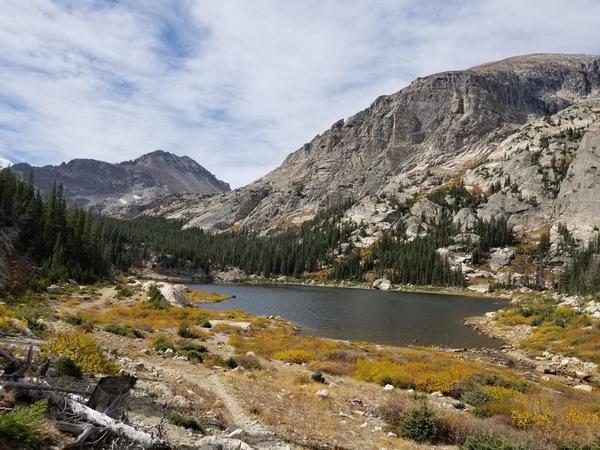How Hiking Got Me Thinking About Leasing
Part One: Socks and UX
By John Hall - October 23, 2018
Earlier this year, I started hiking again. It’s a great workout, especially if you live in an area with amazing trails and endless natural beauty.
<<< I mean, just look at that! Pretty nice, huh?
Hiking is better when you have the right gear, and it doesn’t take long to learn that good hiking socks are essential for comfort and performance.
Those white socks that you buy in packs of six? They just won’t cut it when it comes to staying put on your foot, or staying dry. It wasn’t long before I discovered moisture-wicking, designed-for-distance-running, multi-colored socks like these:
.jpg)
Yes, this post is really about socks, but we are going to end up on leasing. At some point.
There were so many choices, and shopping for different colors and styles was so much more fun than looking for plain white gym socks. However, before I could jump in (feet first, of course!), I had to solve one big problem.
One big foot problem.
Socks are designed to fit a broad range of feet. If you go to a sporting goods store, you will find rows and rows of socks, all labelled “Men’s L: Size 10 - 13”. Which means that all of these socks will fit anyone who wears a men’s shoe sized 10 to 13, right?
Not quite. Sock sizes are not the same as shoe sizes. Those socks that are sized at 10 - 13, are designed for shoe sizes of 8 - 12. I happen to wear size 13 shoes, which means I need the XL socks that most places don’t carry.
(If you have ever wondered about why sock and shoe sizes aren’t the same, know that it is shoes that are to blame. Sock sizes are simple - they are how long a foot is in inches. On the other hand, shoe sizes are based upon the size of the foot-shaped molds that are used to make them. Shoe molds (or “lasts”) must be larger than the feet they are designed to fit.)
OK, I might be getting too far off topic, but haven't you ever wondered about that? Time to get back on track! We are almost there.
Now, I could have done what I always did before, and just make due with too-small socks, but when it comes to socks for hiking, fit is (really) important! I had no interest in paying premium prices for socks that didn’t fit perfectly.
So, I took to the internet, and that is where I was reminded of the importance of UX.
You probably know that UX stands for user experience, which simply describes how easy or pleasing a website or application is to use. UX standards are ever-changing, as designers seek to make more complex transactions easier for users to navigate. If you have ever bailed out of a website because you don't have the time or energy to get to where you want to be, you have experienced bad UX.
And when it came to finding hiking socks online, I was surprised by some of the UX problems I encountered. Problems like these:
1) Searches were too broad.
I did not want socks that were designed for other sports, or that were not available in my size. Yet, on many sites, I was unable to narrow my search down to only what I wanted.
2) Searches were too narrow.
Other sites required me to select search criteria that I did not want - limiting my desired results. Sure, I only wanted to see socks in my size, but I did not want to rule out socks with different lengths or thickness.
3) Not enough detail.
When I found socks that interested me, I wanted more information. Some sites were surprisingly vague when it came to offering product specifications.
4) Poor visuals.
Hiking socks should look good, so I was surprised to find sites that had poor photography, or worse, “Image Not Available” instead of any photograph at all!
5) Inadequate saving capability.
I wanted to save socks that I was interested in, so that I could refer back to them for comparison or purchasing. Alas, many sites didn’t allow it, short of adding items to a shopping cart. I could save pages, but the pages I saved were often missing the choices I had made on color and style.
When it came to buying hiking socks, I was a motivated customer. I had money to spend, specific needs in mind, and wanted the information I needed to make the best choices in the least amount of time. Given those conditions, it seemed as if many sock websites were not designed to meet my specific needs. Their UX issues led me to sites with better design, where I ultimately made my purchases.
There are plenty of good hiking socks out there. I probably could have soldiered on, and found socks that I liked even more, and at better prices, than what I ended up with. But, at the end of the day, my purchase decision was driven as much by my user experience than by the actual socks.
In other words, UX matters.
Wait! Here we are at the end of this post, and still nothing about leasing? Go to Part 2, for a lot less about socks, and more about the things that make or break multifamily user experience.
(In the meantime, if you need some good hiking socks, I would be happy to share a little intel. Drop me a line!)
PART 2: APARTMENTS AND UX
